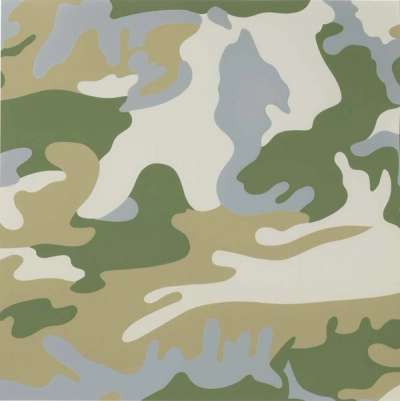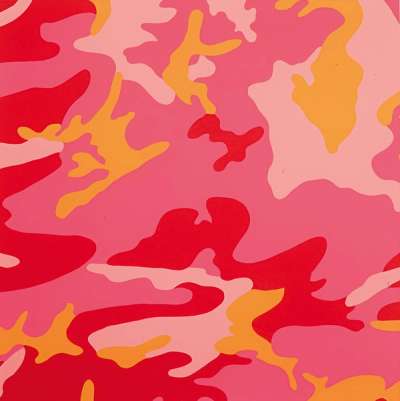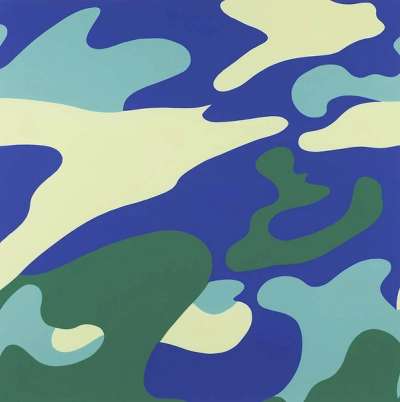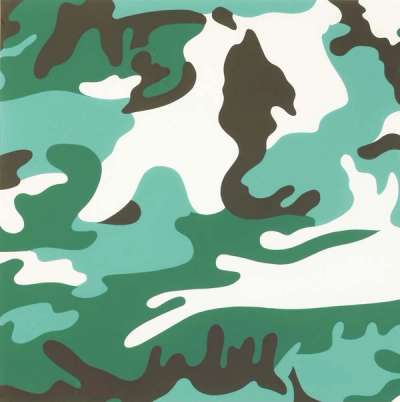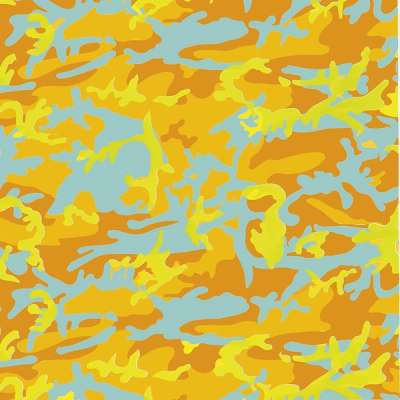
Camouflage (F. & S. II.409)

Camouflage (F. & S. II.409)
Signed Print
Andy Warhol
Price data unavailable
AAGR (5 years) This estimate blends recent public auction records with our own private sale data and network demand.
There aren't enough data points on this work for a comprehensive result. Please speak to a specialist by making an enquiry.
Medium: Screenprint
Edition size: 80
Year: 1987
Size: H 96cm x W 97cm
Signed: Yes
Format: Signed Print
TradingFloor
Track this artwork in realtime
Watch artwork, manage valuations, track your portfolio and return against your collection
Track auction value trend
Auction Results
| Auction Date | Auction House | Location | Hammer Price | Return to Seller | Buyer Paid |
|---|---|---|---|---|---|
| March 2016 | Christie's New York | United States | |||
| October 2015 | Christie's New York | United States | |||
| April 2005 | Bonhams San Francisco | United States |
Meaning & Analysis
As part of Andy Warhol’s final print series Camouflage (1987) published just before his death in the same year, Camouflage (F. & S. II.409) is one of the artist’s most fascinating prints. It shows an appropriated image of camouflage pattern that was commercially available at the time, coloured by Warhol in deep magenta, light pink, orange and yellow. Warhol subverts the subject of pure abstraction, turning an appropriated camouflage pattern into a study of flamboyant colour and form that does not disguise or conceal.
The Camouflage series is made up of eight screen prints showing the commercial camouflage pattern, each coloured in a unique combination of vivid, flat colours. With a distinct lack of focal point, this print has an all-over composition much like the celebrated Abstract Expressionist paintings by figures like Jackson Pollock. Warhol deliberately subverts the grandeur of the Abstract Expressionists in his use of readily available, mundane patterns that he then repeats multiple times across the series.
Throughout his career, Warhol rallied against the ideals of ‘high art’ that were upheld by his predecessors in the Abstract Expressionist movement who insisted on the separation of art from everyday life. In this print, by appropriating already existing imagery to embody the principles of abstraction Warhol questioned traditional concepts of authorship, originality and reproduction. Stripping abstraction of all its traditional connotations of originality and freedom, Warhol successfully silences his critics and mocks Abstract Expressionism through the realm of Pop Art.
Andy Warhol was a leading figure of the Pop Art movement and is often considered the father of Pop Art. Born in 1928, Warhol allowed cultural references of the 20th century to drive his work. From the depiction of glamorous public figures, such as Marilyn Monroe, to the everyday Campbell’s Soup Can, the artist challenged what was considered art by blurring the boundaries between high art and mass consumerism. Warhol's preferred screen printing technique further reiterated his obsession with mass culture, enabling art to be seen as somewhat of a commodity through the reproduced images in multiple colour ways.
